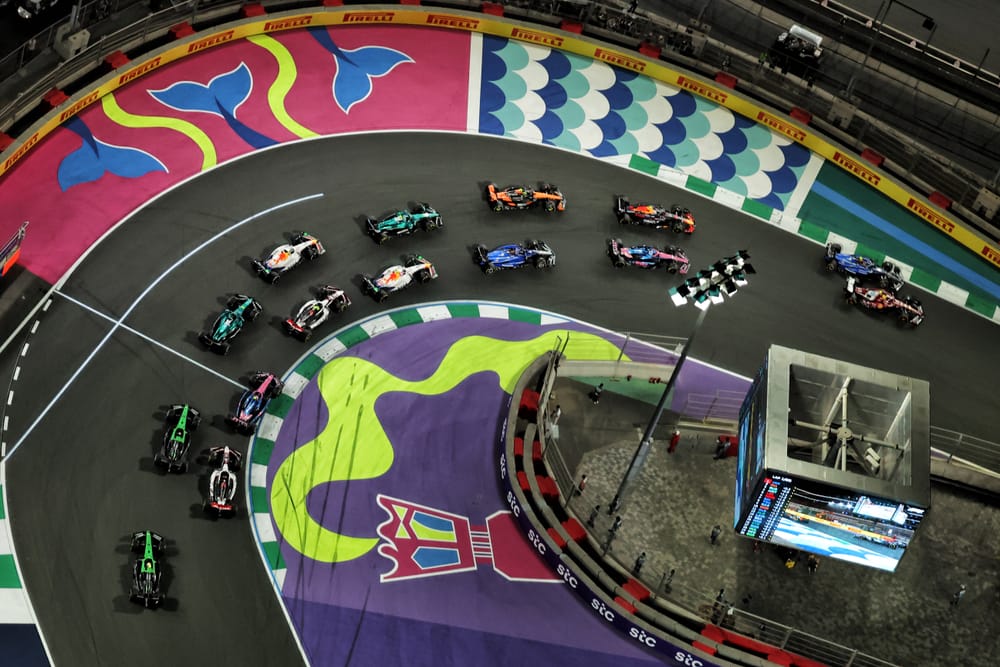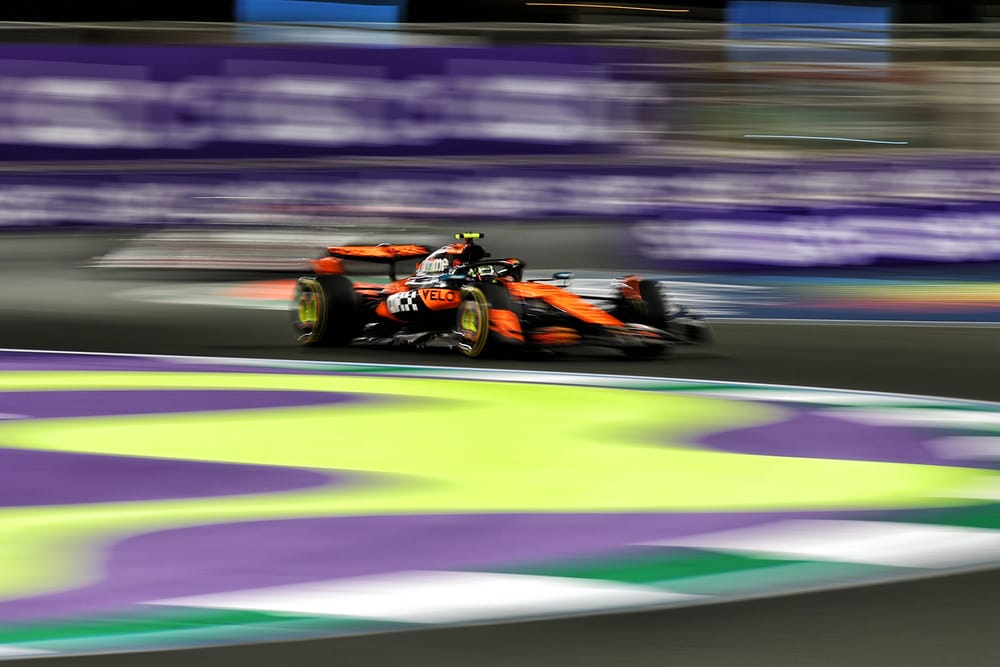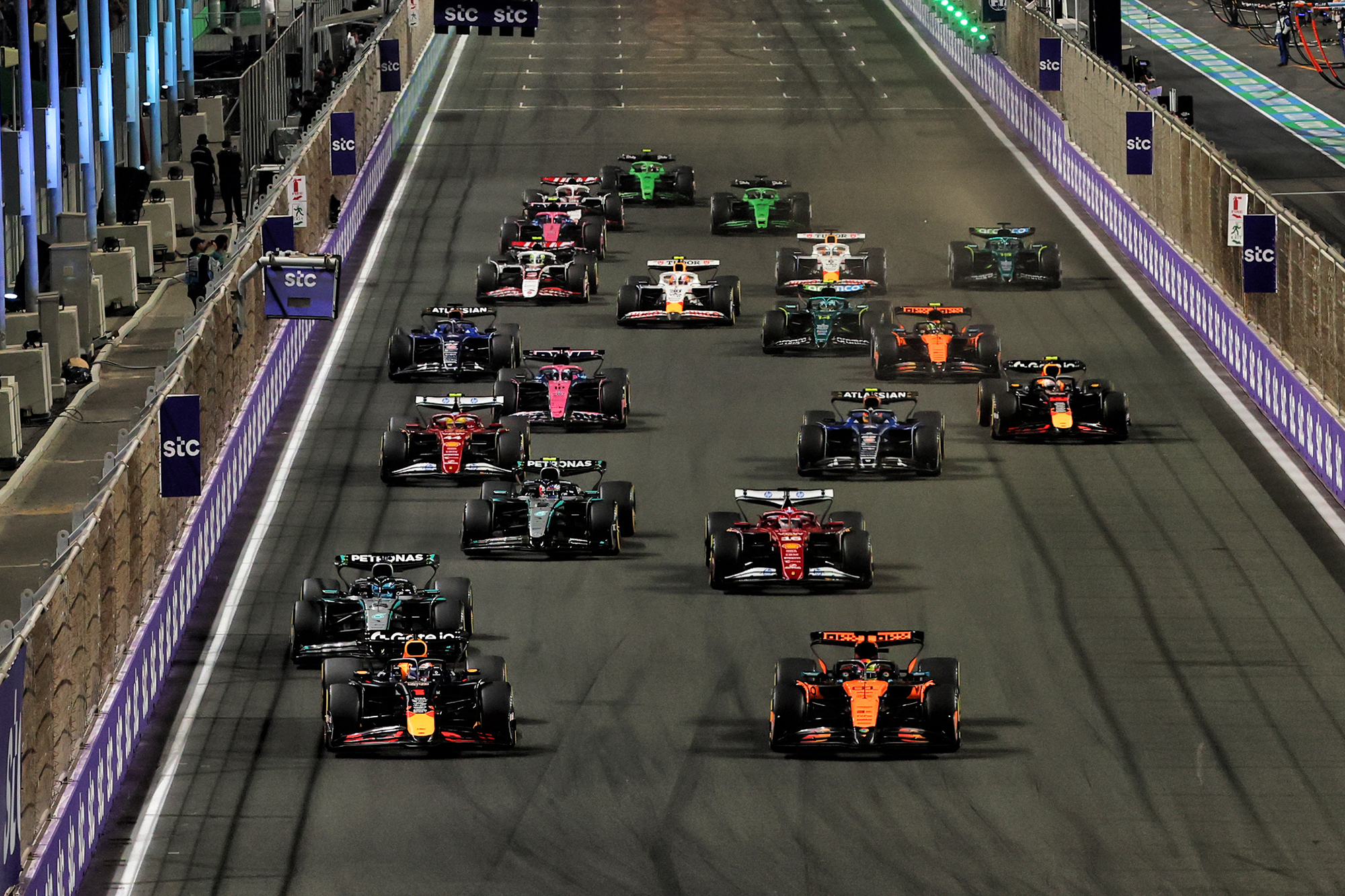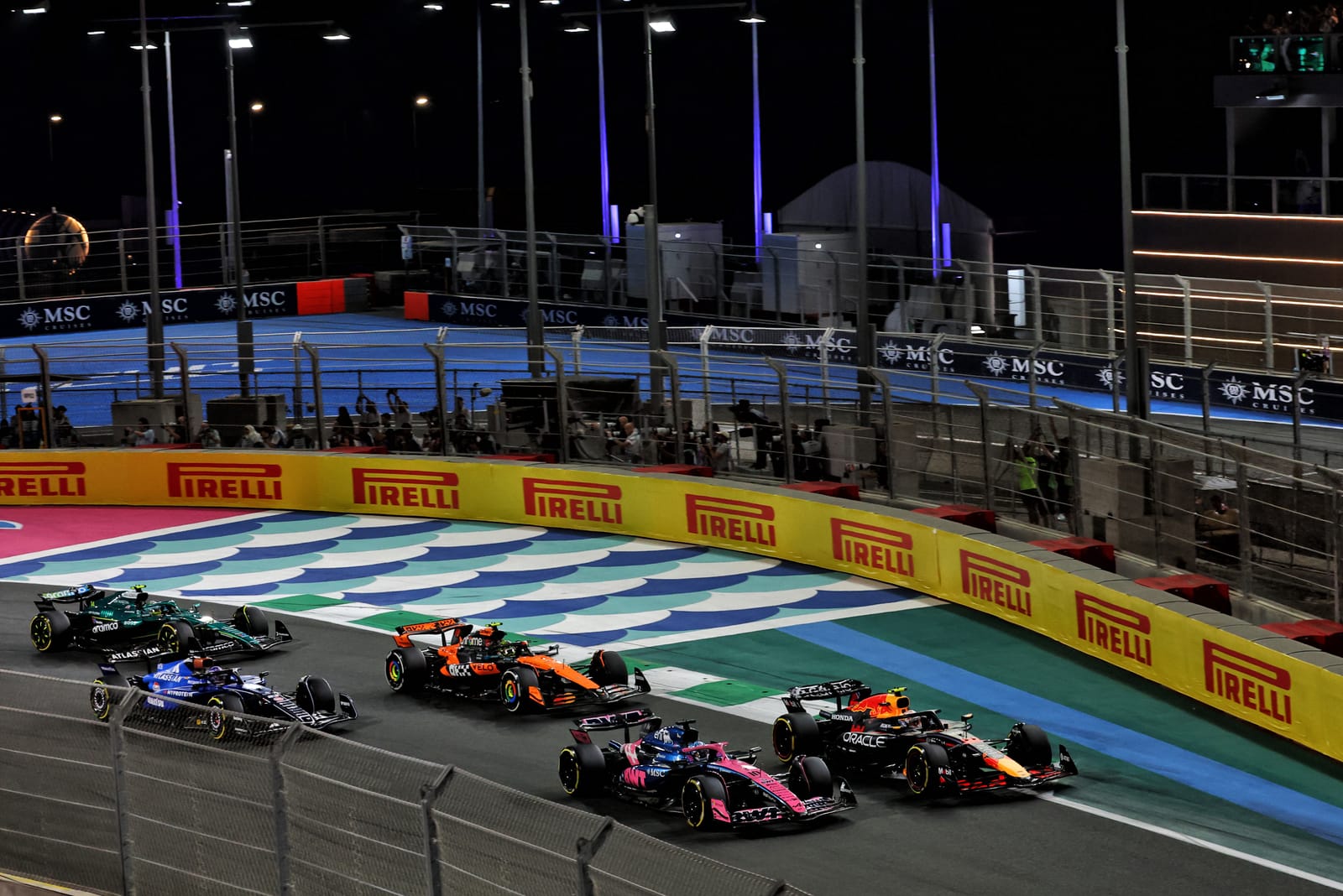There's a new Formula 1 world championship leader after the Saudi Arabian Grand Prix - but we learned a lot more than just that in Jeddah.
This is a dirty air championship
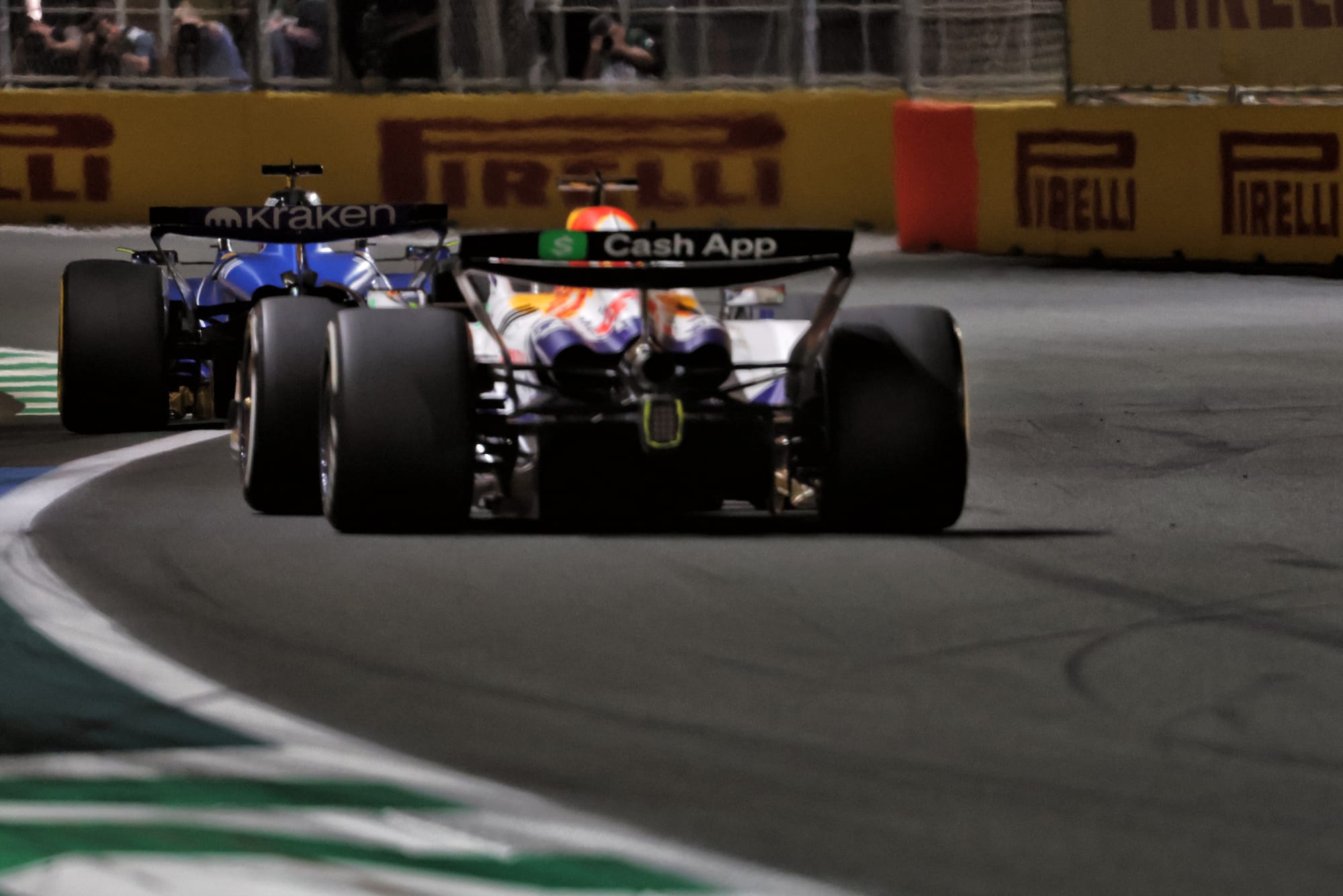
For the first time in 2025, Formula 1 had a winner who had not started from pole position.
Oscar Piastri's brilliant getaway from the front row, and the first-corner shenanigans that triggered the penalty for Max Verstappen, meant that it was the McLaren driver who broke a trend that had been in place since the start of the season.
However, that does not get away from the growing belief that F1 2025 is turning into a dirty air championship - because Piastri's win was not the result of him overtaking or undercutting the leader in pure pace terms. Verstappen's penalty ultimately decided the outcome.

In the opening phase of the race, Piastri could not get close enough to Verstappen and, most likely as a result of extra sliding caused by his pursuit of the Red Bull, it was his tyres that gave up first.
The Saudi Arabian GP has highlighted once again that, although things are close at the front, turbulent wake from the cars ahead is hampering the ability for close racing - and anyone who tries to overcome it in their pursuit of a pass finds their tyres overheating.
With there being no chance of the cars being tweaked over the remainder of the campaign, the stage is set for a campaign where qualifying and the charge to the first corner may well now be the most decisive moments of each F1 weekend.
Piastri passed a major test
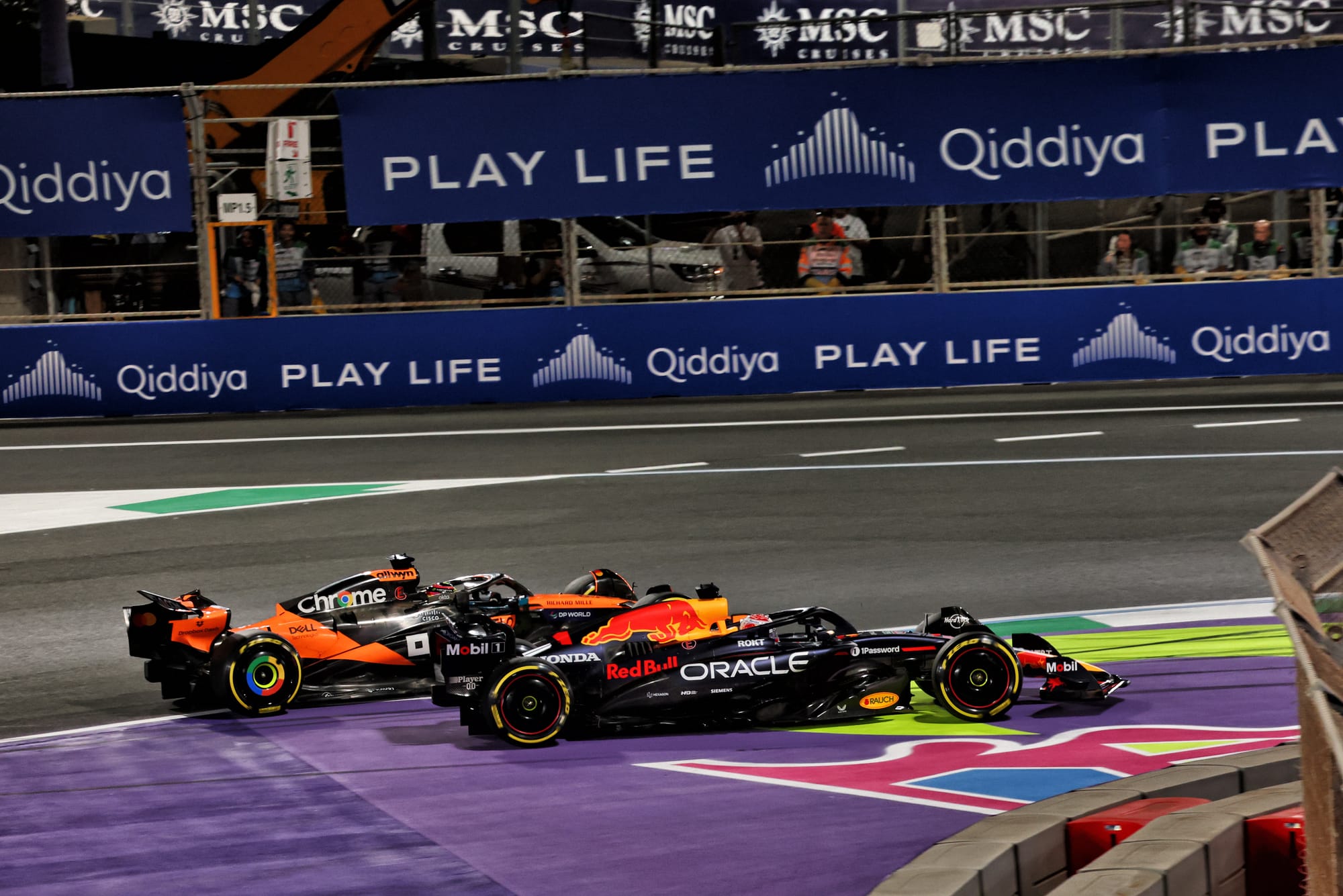
With the focus on Verstappen's penalty, other details of the start and first corner were relegated to footnotes or seemingly forgotten entirely.
But it should not go unnoticed that Piastri passed a major test, and not just by winning a race he was probably third-quickest at (behind Lando Norris and Verstappen).
Piastri has had some experience racing Verstappen already in F1 so this was not his first chance to be tested against the grid's most ruthless racer but it was probably the highest the stakes have been: on the front row together, the knowledge that who came out of Turn 1 ahead would probably win, and the wider context of a massive chance to take the championship lead.
To face that and ace the start, with Verstappen's only being "average" to quote his team principal Christian Horner, then stand his ground into the first corner, was a great example of Piastri's composure and his own ruthlessness.
He gave as good as Verstappen's rivals usually get, then managed a tense race to win without fault. And even Verstappen was impressed: "He's very calm in his approach, and I like that. It shows on track.
"He delivers when he has to, barely makes mistakes - and that's what you need when you want to fight for a championship."
The first race where McLaren wasn't quickest
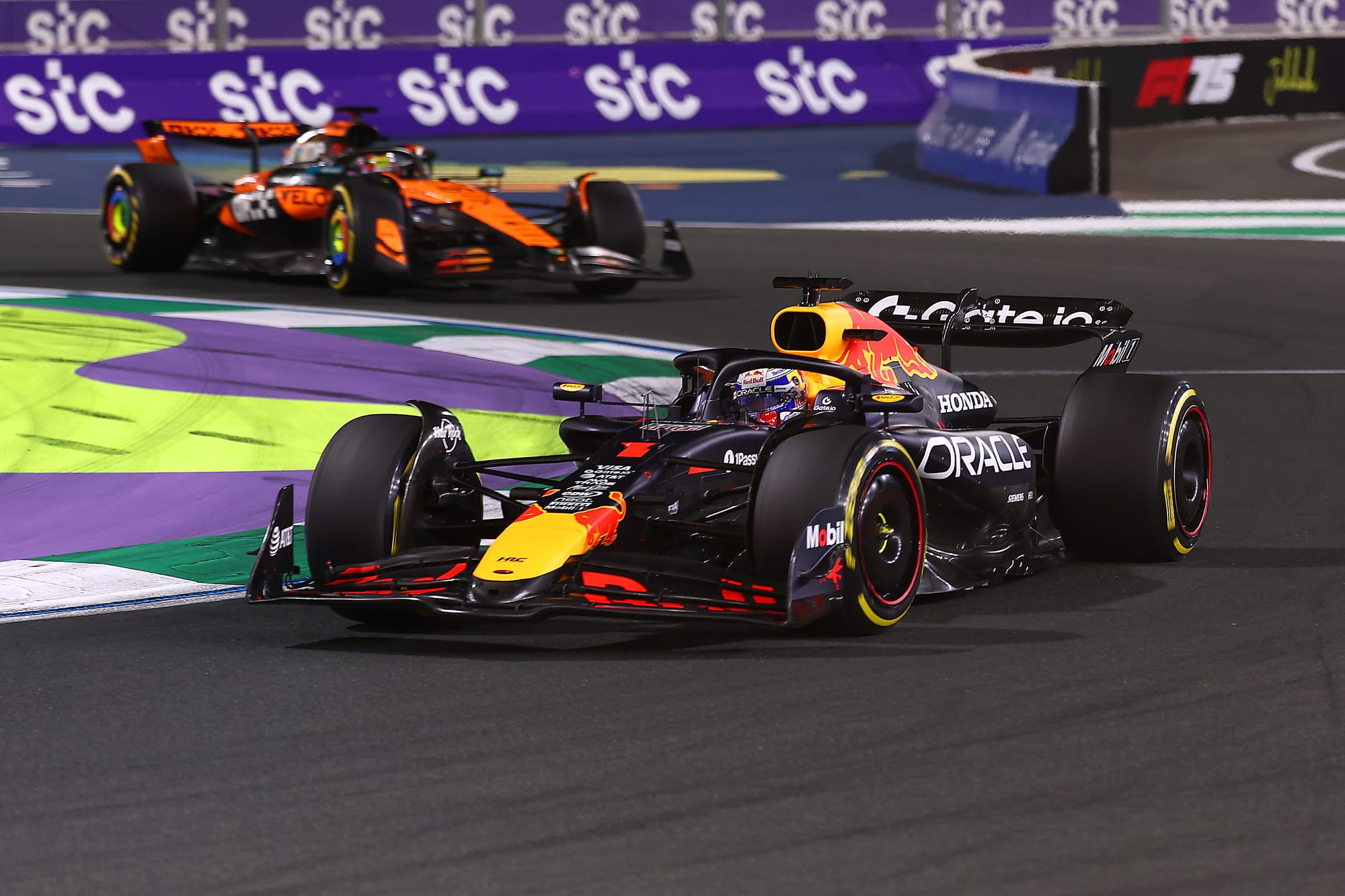
While Piastri maintained McLaren's strong start to the F1 season as he took the team's fourth win in five grands prix, there was something unique about the Saudi Arabian GP: for the first time this year, McLaren did not appear to have the fastest race car.
Having been well clear in Australia, China and Bahrain, even when it lost out to Verstappen in Japan the consensus was that the MCL39 had had the ultimate pace but was beaten because its drivers would not find a way past the leader (having failed to maximise qualifying).
Jeddah was a different story though. On a weekend when tyre temperature management was important, so McLaren's advantage should have been clear, Red Bull was every bit a match for it - and potentially even better.

Sure, McLaren had been miles ahead in the hot daytime practice sessions but, over the race distance, it was Piastri's medium tyres that rolled over first in the opening stint - and then Verstappen's final push to the flag allowed him to ultimately close up.
The margins may have been minimal but, considering just a few weeks ago there was talk about McLaren easily controlling races from the front to win by 20 seconds or more, it appears that Red Bull could now be an equal - on the right tracks.
The cause of Norris Q3 'episodes'
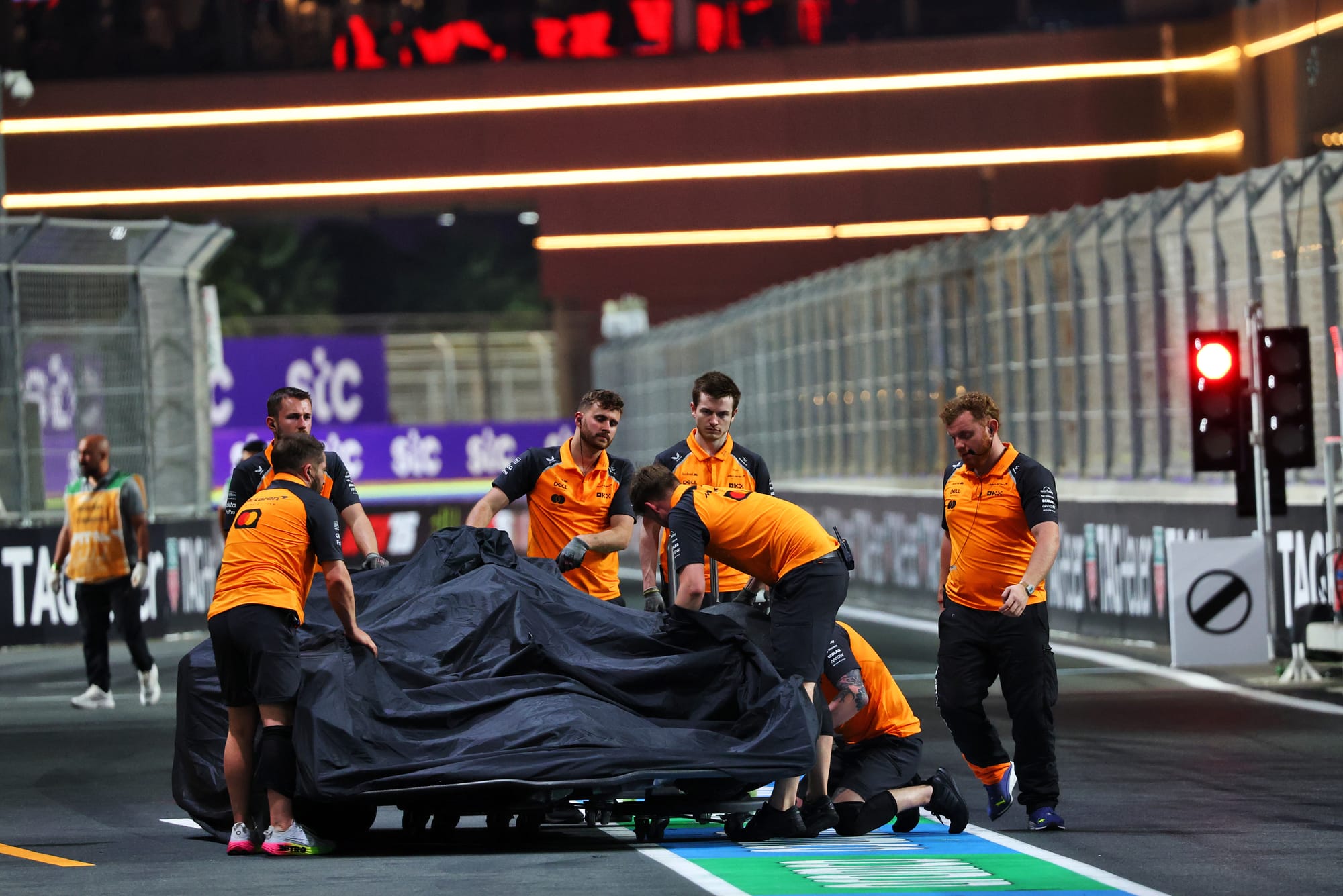
Norris couldn't replicate his Bahrain recovery to the podium after giving himself a little too much work to do with a bigger error and worse grid position in Jeddah - the only track he's yet to outqualify Piastri on.
He paid the price for another "episode" in getting caught out by McLaren's car at the limit, and now both team and driver have admitted Norris really needs to rein it in slightly to cut back the errors while the car is like this.
Norris was the favourite for pole and victory after practice but took what he described as a "silly risk" in Q3, carrying way too much into Turn 4 and understeering slightly onto the exit kerb, which spat him into the wall.
McLaren has noticed that Norris keeps being surprised by the behaviour of the car when it is pushed for the final milliseconds in qualifying, although this might have been a little more than that. Still, team boss Andrea Stella described the mistakes as "episodes" that stem from McLaren's car becoming a little harder for the drivers to feel and understand.
The short version is Norris is inducing more errors, and not mitigating the risk of the car catching him out as well as Piastri. He can be very quick, but is more prone to mistakes. And this needs to be toned down.
"I've got to work on my Saturdays," Norris admitted. "And if I can work on my Saturdays I am confident I can go back to where I was."
Mercedes has a problem to understand
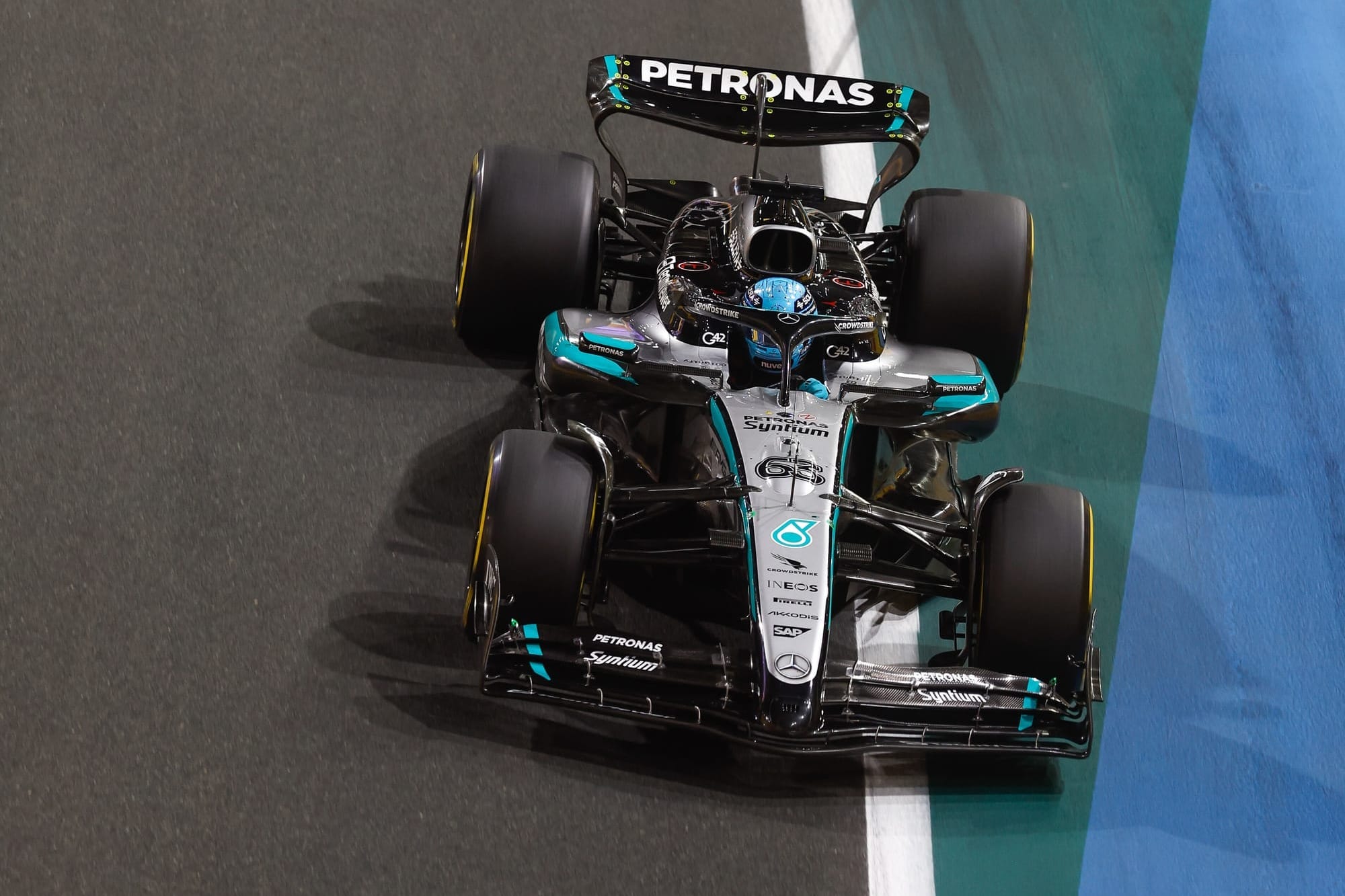
Mercedes did not anticipate its "worst performance so far" in Saudi Arabia after an expectation to challenge for the podium faded into a distant fifth and sixth.
George Russell finished further behind the race winner than in any grand prix this season, almost half a minute adrift of Oscar Piastri, and there were no immediate explanations for Russell's tyre blister and the excessive management both cars needed.
But while Mercedes had anticipated a deficit to McLaren in Jeddah, it was caught out by the extent of its struggles relative to Red Bull and even Ferrari - with team boss Toto Wolff calling it an "additional negative".
"You kind of manage your expectations for being second quickest, even that is obviously not what we'd wish to achieve," he said. "Then you see this race panning out like it did, it just adds to the frustration of the situation."
Russell and Kimi Antonelli struggled with overheating on both compounds, suffering on the front and rear axles when they pushed harder. Russell said it was "massive" and that he "fell off the cliff".
"We need to understand why it was so bad and why relatively speaking it was much better in Bahrain," said Russell.
Zero positives for Hamilton
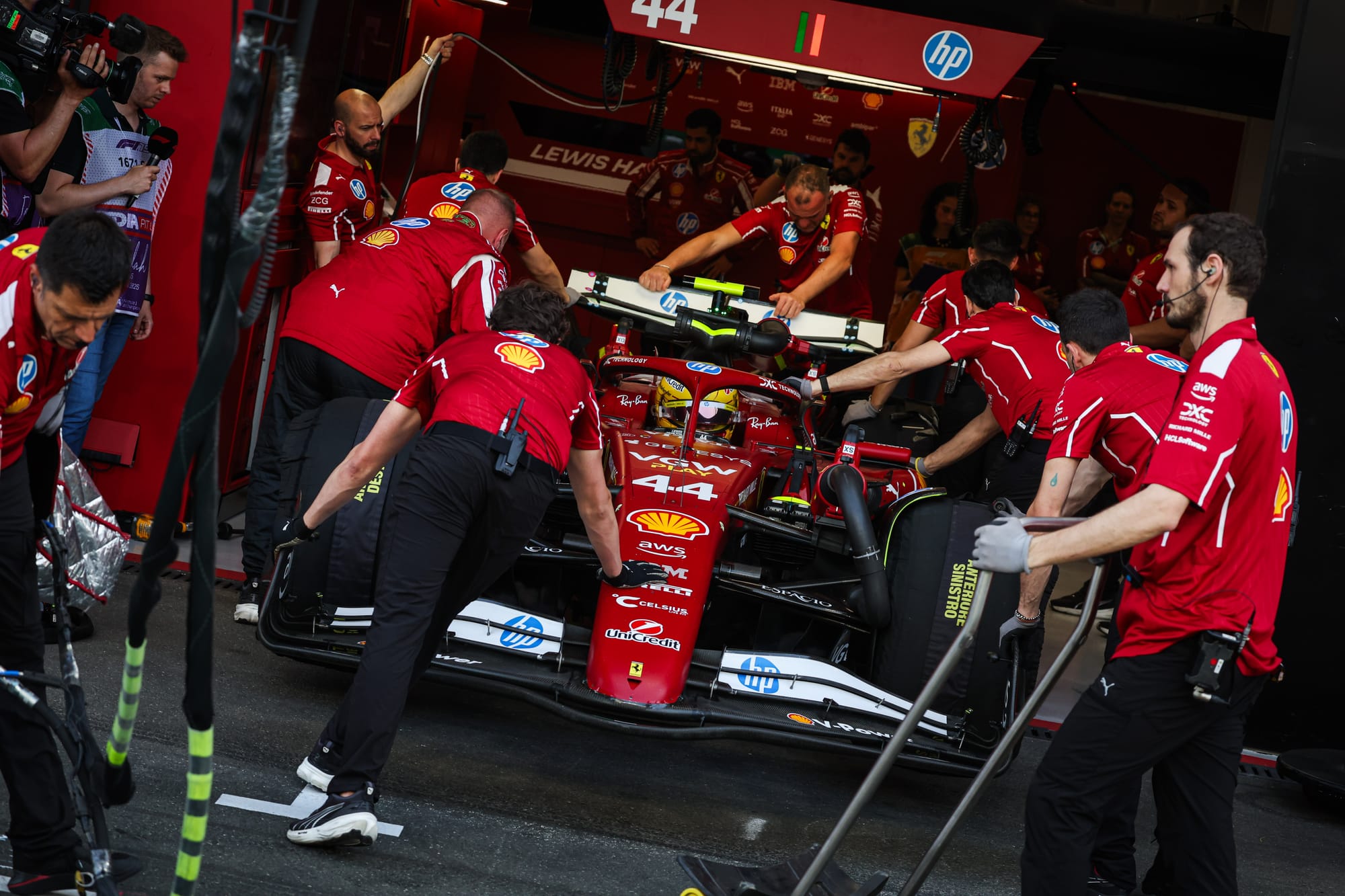
Lewis Hamilton started the weekend optimistic he'd made a breakthrough in driving style understanding in Bahrain. He ended the it admitting there were "zero positives" for him beyond his team-mate Charles Leclerc's third place.
This was comfortably Hamilton's worst weekend for Ferrari. After Friday practice he was simply hoping he could break into the top 10, then after making Q3 by a margin of just seven thousandths he qualified just over half a second slower than Leclerc. He started and finished seventh, but showed little pace through the weekend.
So what's the problem? Ultimately, it's everything. He lacks confidence in the rear end in the high-speed corners, a characteristic Leclerc is tolerating as it mitigates the understeer that sets in later in the corner. He struggled with the tyres in the race, was inconsistent even in the slower corners and continues to struggle most when pushing for that extra fraction at the business end of Q3.
Hamilton says he's tried to change the car to suit his traditional style, but now concedes it's about adapting the way he's driving. The question is, can he? The man himself sounds uncertain of the answer.
Time for Tsunoda's Red Bull pre-season
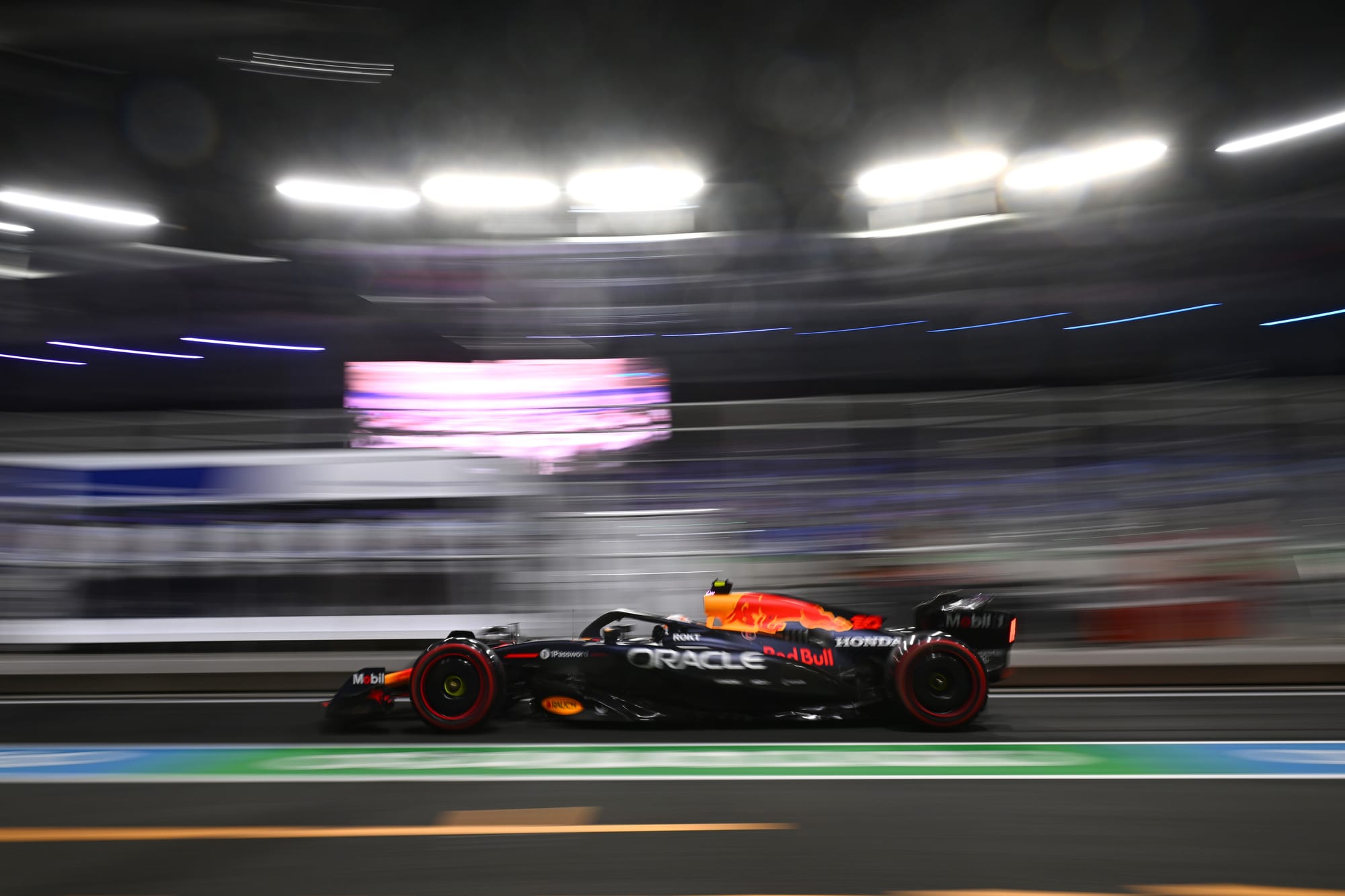
The Japan/Bahrain/Saudi Arabia triple-header was a baptism of fire for Yuki Tsunoda after his sudden promotion to Red Bull Racing, and ended disappointingly with an avoidable first-lap crash that cost him a chance at a good points finish.
He's shown promise, and even in Saudi Arabia where he was a massive nine tenths off Verstappen in qualifying that margin exaggerated the pace deficit. But he admits he doesn't yet fully understand a tricky car that regularly catches him out.
While Tsunoda hasn't pieced together a weekend where he maximised his potential, he's convinced the team that he can crack it and even at his worst has been a significant upgrade on the man he replaced, Liam Lawson.
Now, Tsunoda has the chance to have what's effectively his pre-season preparation with Red Bull. On Tuesday he will be at its Milton Keynes base for simulator work, then on Wednesday he will test the 2023 RB21 at Silverstone.
This will give him the chance for a full day focused on his understanding of a related car, experimenting with set-ups and driving techniques in a bid to move more quickly along his learning curve.
That should mean he's ready for a step forward come the Miami GP.
The real Sainz has arrived at Williams
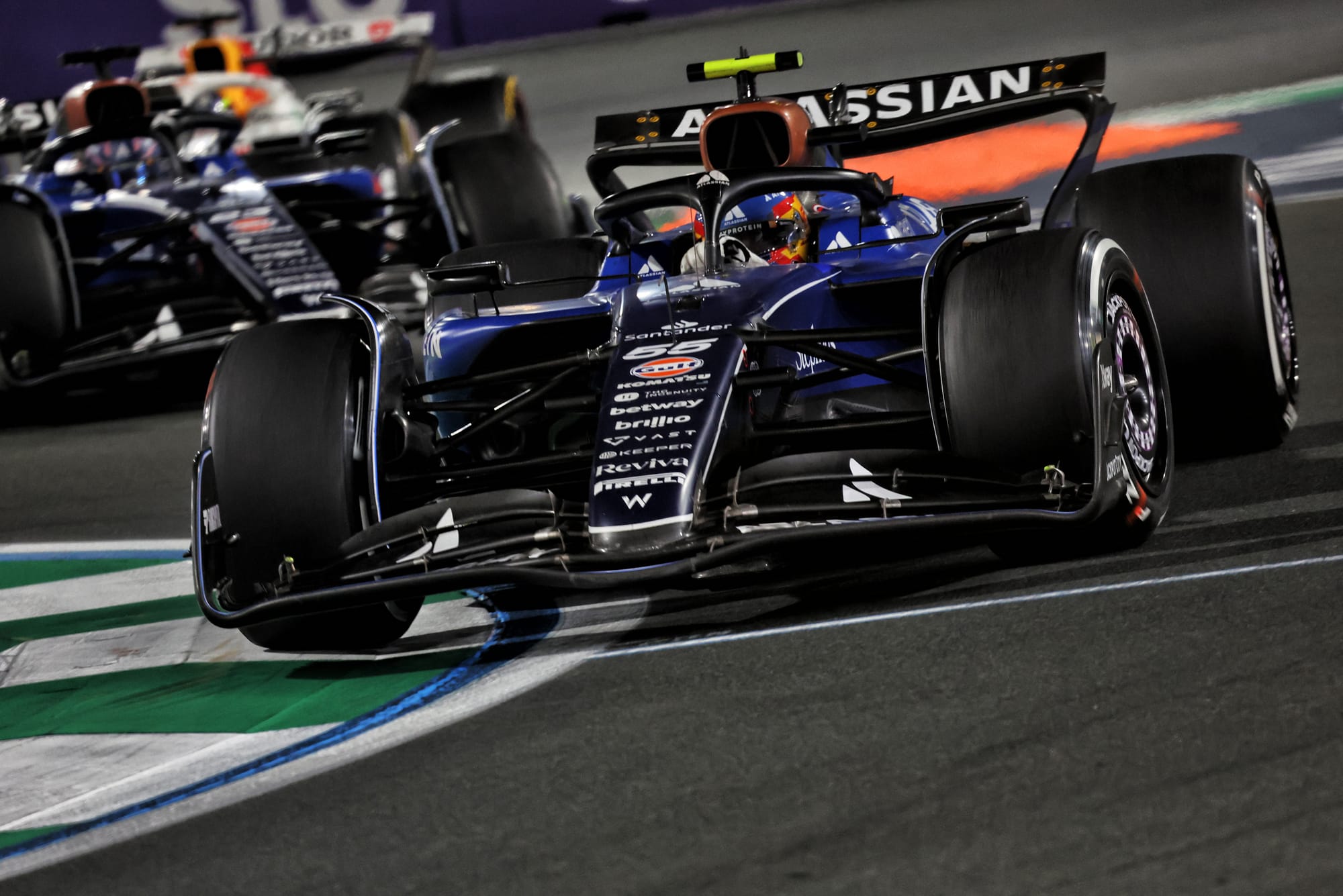
Carlos Sainz picked a great time to have his best qualifying in Saudi Arabia - and finally put together a complete weekend with his new F1 team.
After a tricky start to life at Williams, Sainz was closer to Alex Albon in Japan and made it to Q3 for the first time in Bahrain.
But this was the first weekend 'the real Sainz' showed up from start to finish as he shone in qualifying, picked his battles better in the race, and managed a strong points finish with relative ease backed up ably by Albon.
Sainz thinks he is now more consistently getting close to the maximum out of the car, and feels he has got up to speed "pretty quickly" compared to others who have changed teams - summarising it as feeling "very happy" with a "very, very solid weekend".
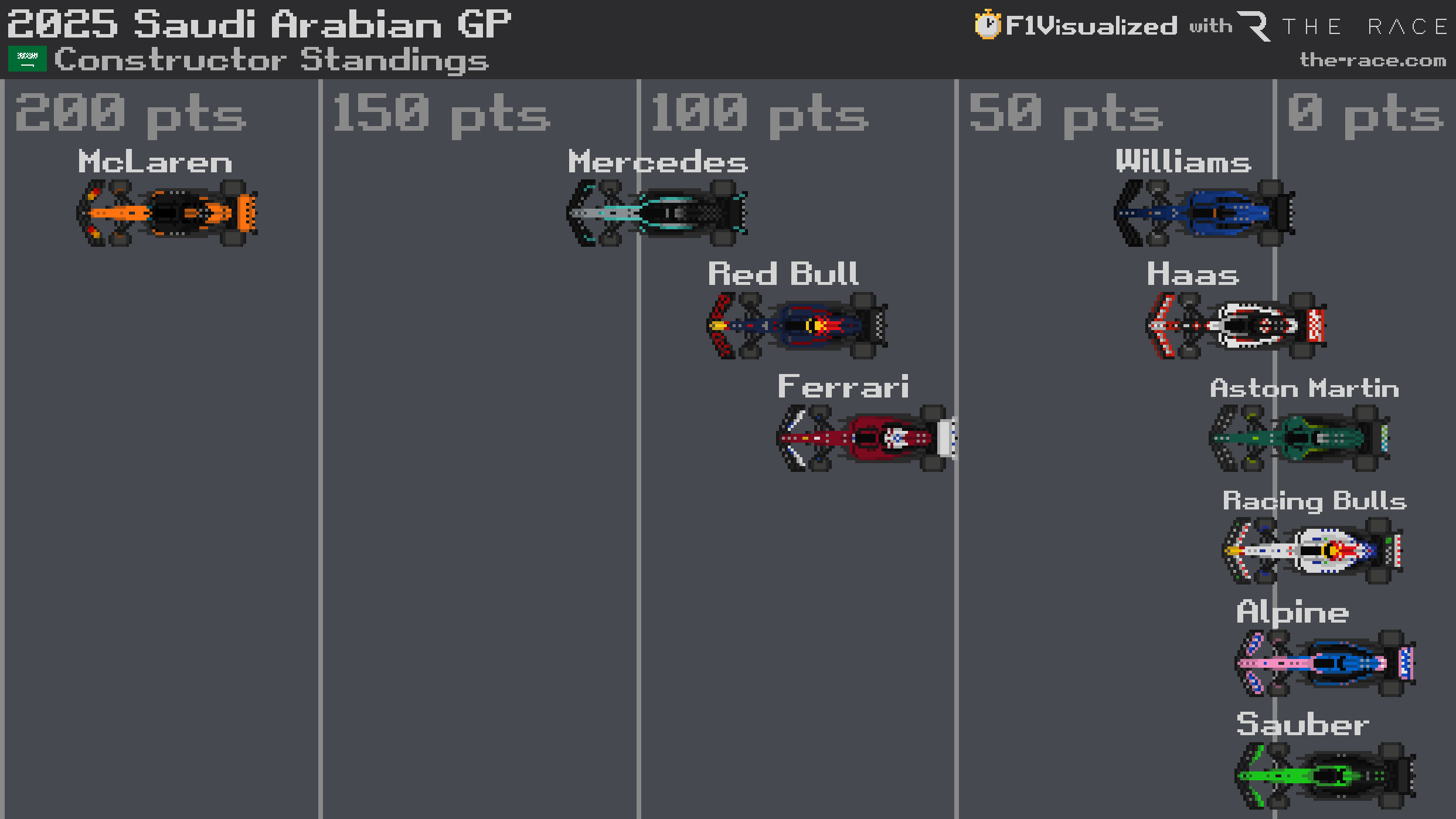
The double-points finish with Sainz eighth and Albon ninth was a big result for Williams to move into fifth in the constructors' championship, and secured by Sainz allowing Albon to have a tow and DRS to ward off a charging Isack Hadjar behind.
Sainz said it was a little tense knowing he couldn't afford to make a single mistake but added it was the right call by the team to ensure "we could bring home this incredible result", while Albon was also satisfied after recovering from fractionally missing out on Q3 to bag his fourth points finish in five races.
Stroll's unwanted new record
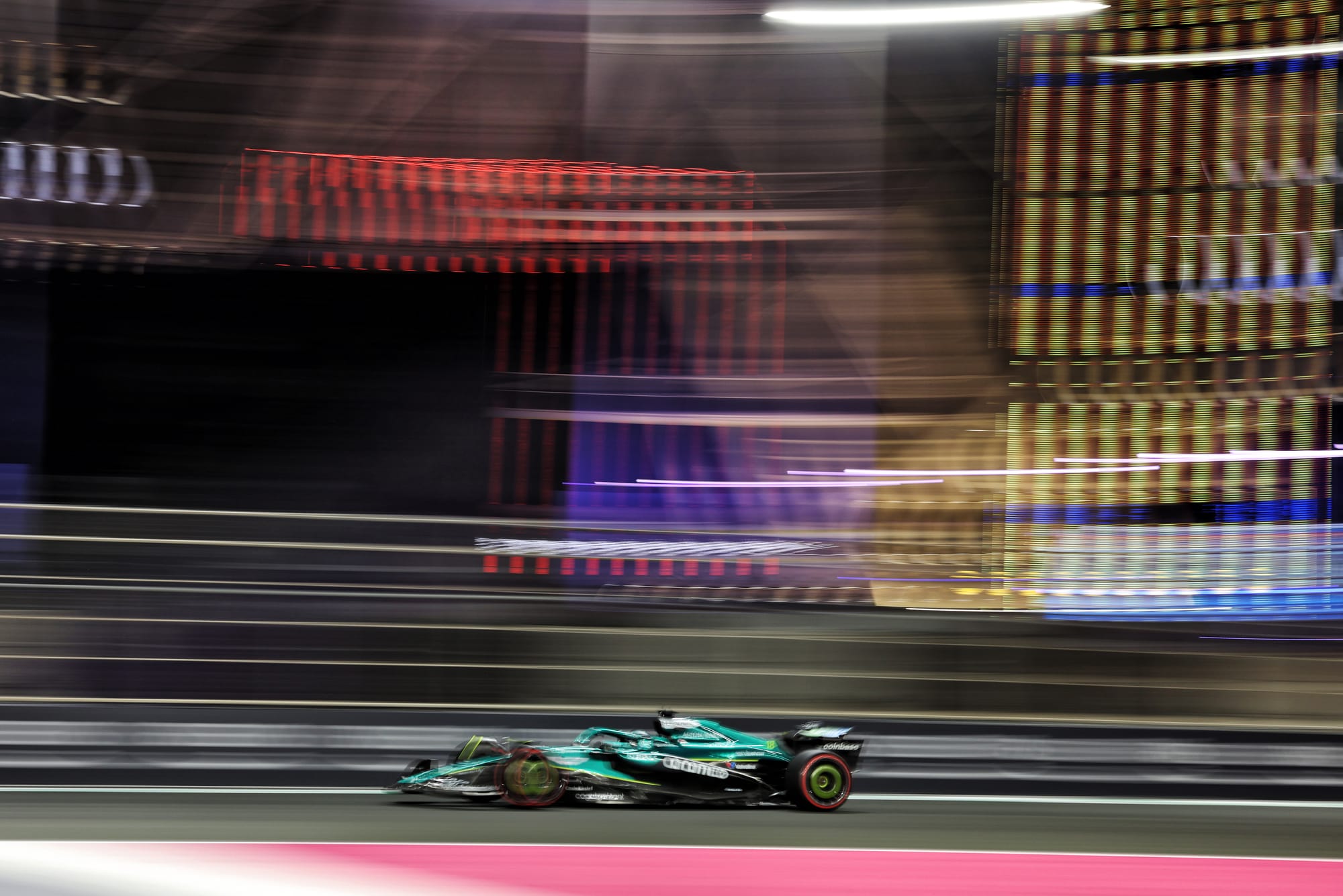
Lance Stroll set a new Q1 exit record in Saudi Arabia, failing to get out of the first segment for the 75th time.
He tried to brush it off by pointing out "it's car-dependent" and if you "put the McLaren drivers in a Sauber for 10 years, they will have the most Q1 exits". That's true to a point, although Stroll holds at least some of the responsibility.
For some perspective, Stroll's team-mates have 47 Q1 exits to his 75, and 74 Q3 appearances to his 40. So it would be disingenuous to say that Stroll's qualifying record is solely down to inferior machinery.
What is fair to say after Jeddah is that while this was a Q1 exit and it is a new record, it didn't really do him justice. Stroll was within a tenth of Fernando Alonso, hardly an egregious deficit or as bad as the last couple of races before that, it's just that was enough to consign him to Q1 while his team-mate progressed.
And this Aston Martin just isn't that good. While Stroll could be doing a better job overall, it's still the case that the car is by far the bigger problem.
The most surprising rookie
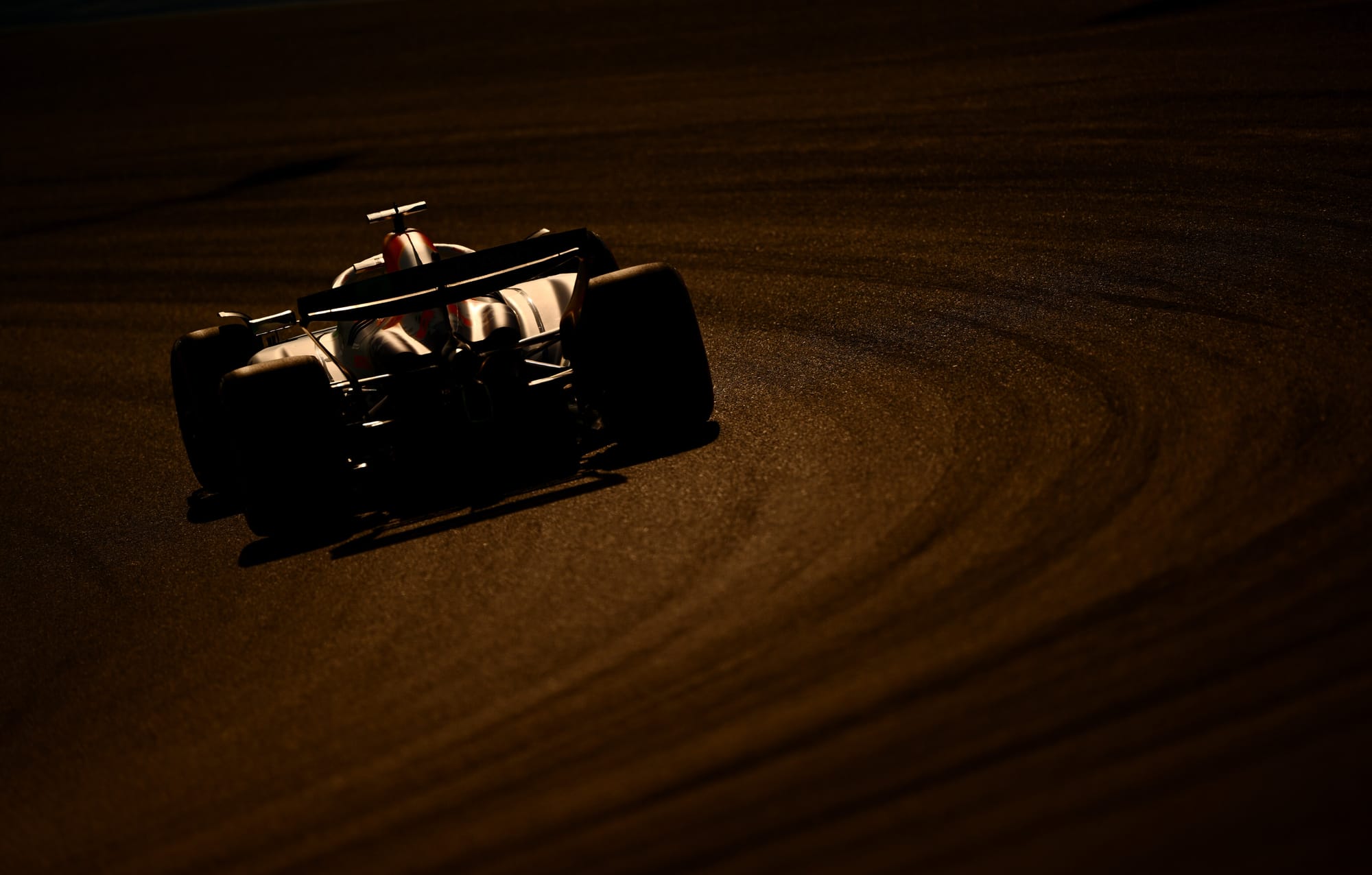
The highest-placed rookie in F1 so far is unsurprisingly Kimi Antonelli, and the best performing is probably Ollie Bearman, given his points record in the Haas and early form against Esteban Ocon.
But the most surprising? That has to be Isack Hadjar, who - despite his lack of F1 preparation relative to all the others bar Gabriel Bortoleto - has excelled more often than not across these early races.
Hadjar's pace has been eye-catching since the first weekend in Australia and his recovery since shunting in the wet on the formation lap there has demonstrated good mental strength and composure. Scoring his first F1 points at Suzuka was already a fine feat but he felt his 10th place in Saudi Arabia was even better.
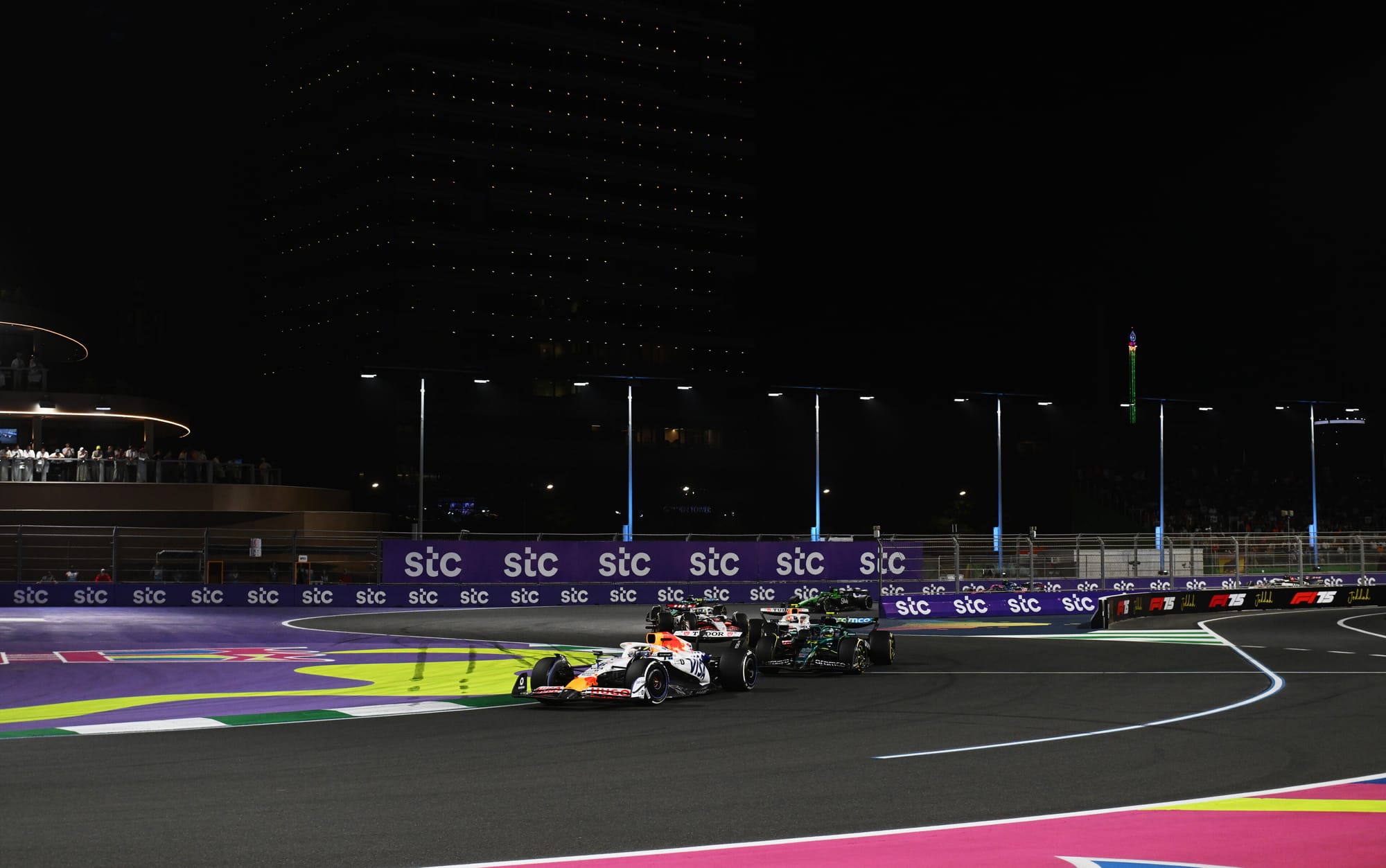
Qualifying had been tricky as Hadjar had lacked a little pace relative to a rejuvenated Liam Lawson, but he turned that around with a strong first lap despite starting on hard tyres - then executed the alternate strategy very well and was only denied a better result by the Williams DRS train tactic.
"It was a perfect race, and to get only one point is a bit harsh," Hadjar said. "It was a really strong drive, maybe a bit better than Japan, because there were more challenges."
A worrying strategy trend
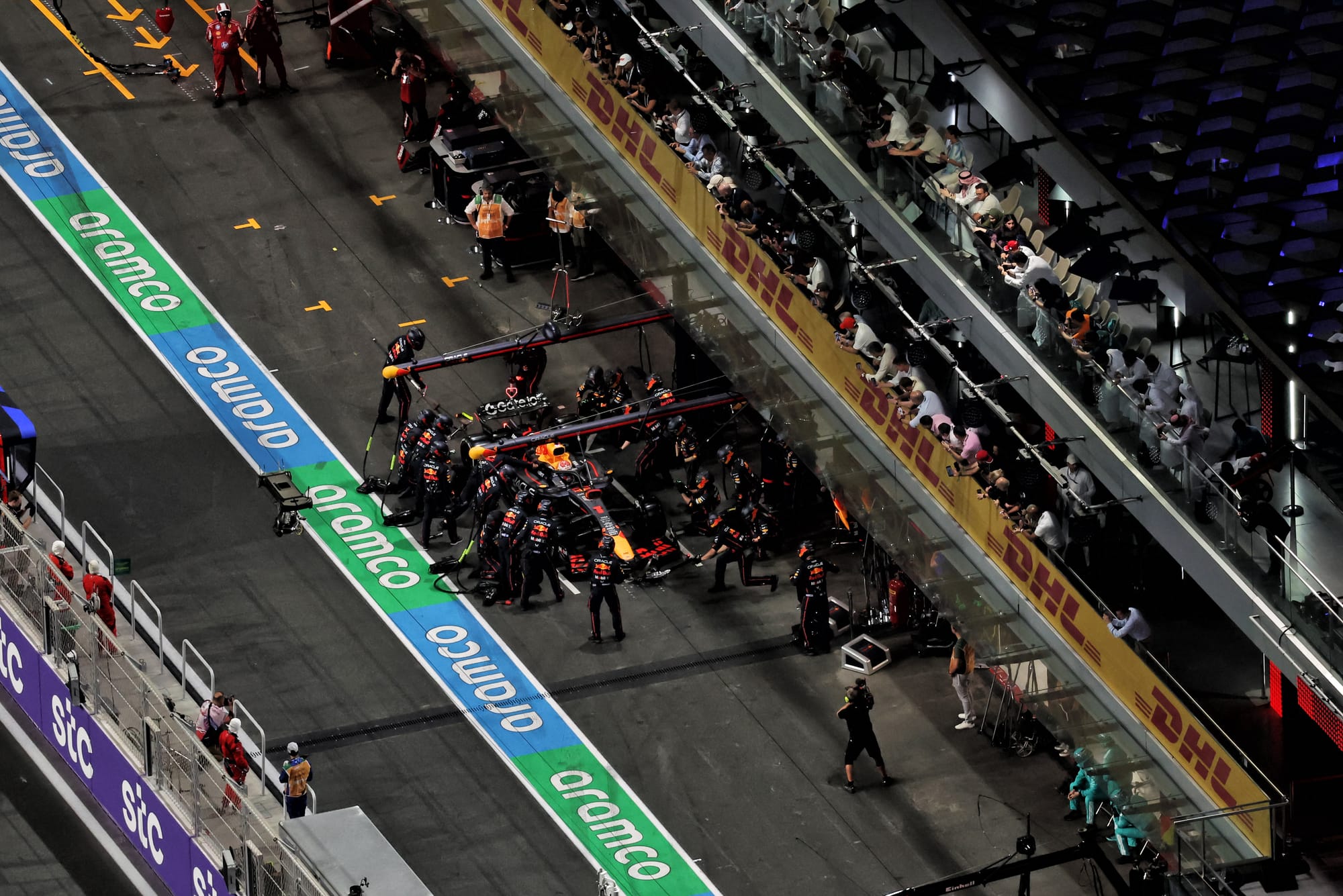
Another F1 race, another one-stopper.
Pirelli took a deliberately softer choice of tyres to Saudi Arabia in a bid to open up strategy options. The idea was that with more heavily degrading tyres, teams would be forced to make a greater number of pitstops and that would spice up the action by turning the event into a two-stopper.
But things did not play out that way. The 2025-spec tyres proved once again to be pretty robust. Already from the first running on Friday it had been clear that the one-stop was not only on the cards, but that it was going to be the best option because degradation was so low.
In a year when dirty air is becoming a bigger problem so overtaking is increasingly difficult, the need for F1 races to offer some strategic variation is becoming more important - but so far in 2025 things seem to be heading in a different direction as teams stretch out their stints.
F1 chiefs and Pirelli are mindful that the season can't turn into one of one-stoppers everywhere, but they want to hold fire to see how things play out over the next few races before deciding if they need to do something different.
This is especially true because with Pirelli's new super-aggressive C6 appearing for the first time at the Emilia Romagna GP next month, it wants to see what impact that brings.
Should things not get spiced up there, then there may need to be a deeper think about some alternative ways to make things more exciting.

